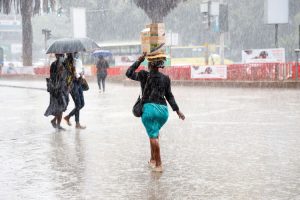Sudden rains on Thursday, September 7, sent fears among some Nairobi residents who expressed concerns over the start of El Nino rains.
Before the sudden rains, the Kenya Meteorological Department had warned that the country would experience an El Nino season in the October to December short rain season in some parts of the country.
The weatherman noted that rainfall is expected to continue until January 2024.

What Causes El Nino Rains
The last time Kenya experienced such conditions was in 2006, and the worst El Nino season occurred in 1997. According to the MET department, the above-average rainfall is caused by the Indian Ocean dipole, which is defined by the difference in sea surface temperatures between the two areas.
All parts of the country are expected to experience above-normal rainfall during this season, with a peak expected in November.
However, arid and semi-arid counties like Turkana, Samburu, and Northeastern counties are likely to experience highly enhanced rainfall, with places like Wajir and Mandera also expecting extended rainfall into January 2024.
El Nino Effects
In 2006, the phenomena caused massive losses including destruction of crops and even loss of lives.
According to experts, above-average rainfall is likely to cause harvest losses, especially in the western belt associated with dense agricultural activities.
Some parts are expected to experience landslides and flooding due to El Nino rains. Education in some parts of the country prone to flooding will also be affected by this phenomenon.
In Nairobi, the rains would likely render the roads impassable due to flooding. Weak buildings may also develop cracks due to above-average rainfall.
Positive Effects
According to the Ministry of Agriculture, the rains may contribute to enhanced agricultural production in some parts of the Western and Eastern regions, leading to more affordable agricultural food commodities and improved food security.
Additionally, the rains would increase water volumes in the dams to support geothermal power generation.
Water rationing in some parts of the country will also reduce due to the heavy downpour during that period.
